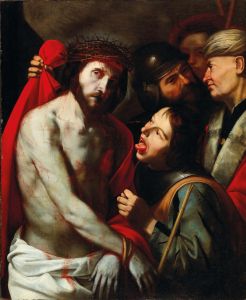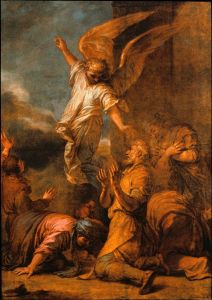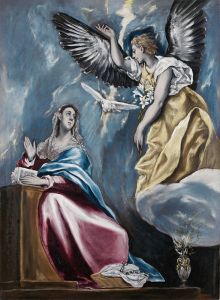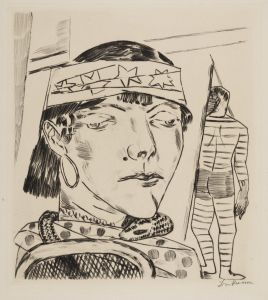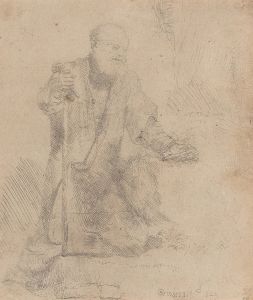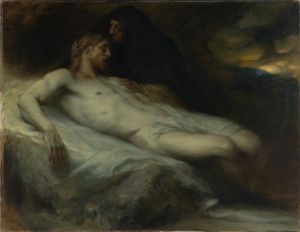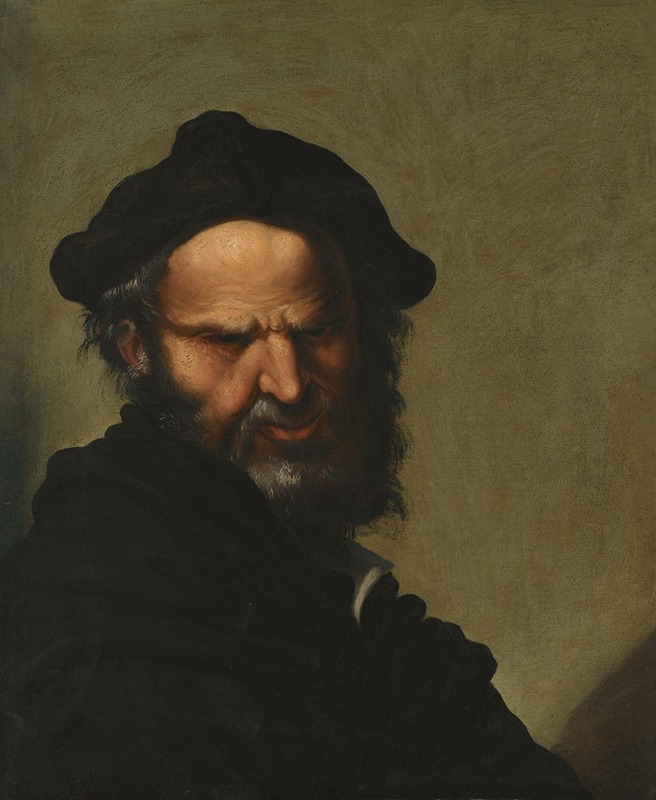
Head Of A Philosopher
A hand-painted replica of Salvator Rosa’s masterpiece Head Of A Philosopher, meticulously crafted by professional artists to capture the true essence of the original. Each piece is created with museum-quality canvas and rare mineral pigments, carefully painted by experienced artists with delicate brushstrokes and rich, layered colors to perfectly recreate the texture of the original artwork. Unlike machine-printed reproductions, this hand-painted version brings the painting to life, infused with the artist’s emotions and skill in every stroke. Whether for personal collection or home decoration, it instantly elevates the artistic atmosphere of any space.
Salvator Rosa was an Italian Baroque painter, poet, and printmaker active in the 17th century, known for his unorthodox and often dramatic style. One of his notable works is "Head of a Philosopher," a painting that exemplifies his interest in capturing the intellectual and emotional depth of his subjects.
"Head of a Philosopher" is a compelling example of Rosa's ability to convey character and mood through portraiture. The painting features the head and shoulders of a male figure, typically interpreted as a philosopher, given the contemplative expression and the traditional association of such figures with deep thought and wisdom. The philosopher's face is rendered with a high degree of realism, showcasing Rosa's skill in capturing the subtleties of human expression. The furrowed brow, intense gaze, and slightly parted lips suggest a moment of introspection or revelation.
Rosa's use of chiaroscuro, the strong contrast between light and dark, is evident in this work. This technique not only adds a dramatic effect but also highlights the philosopher's facial features, drawing the viewer's attention to the intensity of his expression. The background is usually kept dark and unobtrusive, ensuring that the focus remains on the subject's face. This approach is typical of Rosa's portraits, where the emphasis is placed on the psychological depth of the sitter rather than on elaborate settings or backgrounds.
Salvator Rosa was known for his rebellious spirit and his disdain for the conventions of his time, both in art and in society. This is reflected in his choice of subjects and the way he portrayed them. Unlike many of his contemporaries who focused on religious or mythological themes, Rosa often chose to depict figures from everyday life or those who represented intellectual and philosophical pursuits. His philosophers, in particular, are not idealized figures but rather individuals marked by the signs of age and experience, suggesting a life of contemplation and perhaps struggle.
The painting "Head of a Philosopher" can be seen as part of Rosa's broader interest in the themes of knowledge, wisdom, and the human condition. His works often explore the tension between the ideal and the real, the heroic and the mundane. In this portrait, the philosopher is not a distant, untouchable figure but a relatable human being, engaged in the universal quest for understanding.
Rosa's influence extended beyond his lifetime, impacting both his contemporaries and later generations of artists. His approach to portraiture, characterized by its emotional depth and psychological insight, can be seen as a precursor to the more expressive styles that emerged in later centuries.
While specific details about the provenance and current location of "Head of a Philosopher" may not be widely documented, the painting remains an important example of Salvator Rosa's contribution to Baroque art. It reflects his unique perspective and his ability to capture the complexity of human thought and emotion, securing his place as a significant figure in the history of art.






